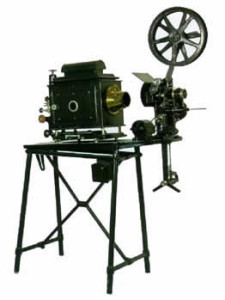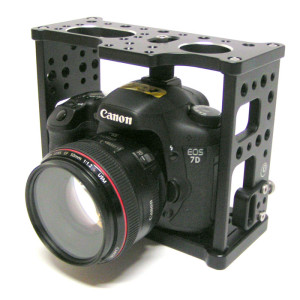 After reading my previous article, on the aspect ratio and pixel measurements of home and cinema movies I imagine great enthusiasm for everyone, thinking that nothing is enough to be able to bring their movies to the big screen. Let’s say that was only a half-truth, because we talked about pixels, and the information with which movies are made for the big screen and for the (relatively) small screen. All true, as far as the final product is concerned, but often the numbers do not correspond to the information captured by the sensors or massaged in the various steps between DI editing and postproduction.
After reading my previous article, on the aspect ratio and pixel measurements of home and cinema movies I imagine great enthusiasm for everyone, thinking that nothing is enough to be able to bring their movies to the big screen. Let’s say that was only a half-truth, because we talked about pixels, and the information with which movies are made for the big screen and for the (relatively) small screen. All true, as far as the final product is concerned, but often the numbers do not correspond to the information captured by the sensors or massaged in the various steps between DI editing and postproduction.
Let’s define what fullHD is on a theoretical level
FullHD is a combination of pixels forming a video that is 1920 pixels wide x 1080 pixels long.
The problem arises from the fact that one should not only consider the recorded file, but it is crucial to check how this information is created and sampled, because the majority of camera sensors (especially in consumer and prosumer, but also in many pro) do not even have enough pixels to cover that number of pixels and are achieved by “technical tricks” such as pixel shifting, oversampling etc etc
So often the cameras have a different (often lower) number of pixels and those numbers are artificially achieved.
So we are talking about images that are less defined than what they really should depict that number of dots.
An ideal camera has one or three sensors in FULLHD format, i.e., measuring 1920 x 1080, whereas when using larger sensors (HDSLR) the technique of scaling from a larger number of pixels is essential in order not to introduce defects and/or loss of definition.
The argument is very simple, if we have too much information, some of it should be discarded, however, if the technique is wrong, the drop in quality is great and thus defects are created.
In order to optimize the video recording of the information collected by the sensors, different manufacturers use different techniques, with several disadvantages:
– only parts of the colorimetry are captured (4:2:2 or 4:2:0 sampling)
– you compress the information (introducing artifacts)
– you lose some of the sharpness in an attempt to reduce the file size
on the other hand as advantages :
– the weight changes, files go from 11.2 gigs per minute (uncompressed file) to 350 mb per minute.
– the buffers and the media on which to save the footage are fewer in demand and therefore cheaper to make
– the machines are more agile and compact, thus allowing the use of cameras even in very constrained and risky situations.
– one has theoretically “democratized” the production of more “cinematic” quality footage, for those with the know-how on how to use them.
The camera works in FULLHD, but how?
 Now HDSLRs are so fashionable, because they are said to have the “cinema effect” inside (we will talk about this illusion in the future), we shoot in FULLHD, theoretically, that is, the file we save has that format, but depending on the machines the sensor captures images differently, more or less well, more or less detailed and/or sharp.
Now HDSLRs are so fashionable, because they are said to have the “cinema effect” inside (we will talk about this illusion in the future), we shoot in FULLHD, theoretically, that is, the file we save has that format, but depending on the machines the sensor captures images differently, more or less well, more or less detailed and/or sharp.
Being a practical person I will not mention one or the other brand, but the technologies used, how they work and what the results are according to our purpose: to have better images.
HDSLRs are used because they have larger sensors than classic cameras, so they offer brighter images for the same lens, more compressible DOF to detach subjects from the background, lower contrast that helps postproduction.
The advantage of the large sensor is a flaw for other reasons, because the CMOS sensor suffers from a flaw called rolling shutter, so the larger the sensor, the more pronounced the flaw in moving shots, especially on circular motions.
In this video you can see how rolling shutter alters rotating elements.
in this video you can see the comparison of linear rolling shutter between two different sensors (aps-c and FullFrame).
Notice how for the same motion the larger the sensor (full frame) the more the buildings tilt and look like they are made of moving jelly.
The rolling shutter is partially correctable in post (the linear one) while for the circular one you can hope for miracles…
When it’s too much…
Another nontrivial problem of using photo sensors is scaling… because we don’t have the pixels of fullHD, we have a lot more… fullHD is about 2 mpixels, on HDSLRs when it goes wrong it’s 16, which is not always an advantage…
HDSLRs mainly use two image scaling techniques : line skipping and pixel binning.
Line Skipping
Line sk ipping is the oldest technique, which should be considered obsolete today, but when it was born 6 years ago it was manageable.
How does it work?

Simple, we have 4000 lines? we only need 1080? okay then we take a line, discard a certain number, then take another line, and so on until the end of the sensor. Of course taking into account the structure of the Bayer sensor, so as you can see in the side image the information captured compared to the original sensor is definitely few and far between.. which brings several problems.
Advantages:
– fast
– simple to perform
– does not require processor power and quick to handle in saving
Disadvantages:
– taking only part of the information you lose definition
– you have artifacts such as aliasing (jaggies on images)
– moires (caused by causal sampling of lines)
– flickering of fine lines (because they are seen in the captured lines in some frames and not in others)
Pixel Binning
The second technique is Pixel binning, it is more effective because it uses all the pixels in the sensor, discards nothing, and to create the movies it downsamples all the information.
In this way it avoids ALL line skipping problems, without introducing other problems.
This technique is a recent introduction in HDSLRs and applied only by some manufacturers because it requires a much more powerful in-camera processor, larger buffers to handle all the information flow, and subsequent sampling for FullHD format.
Color sampling, what is it and why does it concern us?
Professional machines sample color information with sampling defined as 4:4:4, meaning that for each group of pixels all color and brightness information is captured and recorded. Prosumer machines work with lower color sampling, from 4:2:2 to 4:2:0. The lower color sampling, is often not noticeable on the original footage, but if shot within the limits of recordable quality, or if it is heavily post-produced it can show its limitations and/or a greater limitation in its workability.
Without boring you with too many technical concepts, the three digits refer the first to the luminance of the footage, so any pixel brightness information is sampled and captured, the second two digits refer to the sampling of blue and red. In the image below you see a graphical representation of that sampling. so we have a more stable and detailed carrier in the luminance, while if we have to manipulate the color on the blue and red we have less information, which can turn into artifacts or defects on the final footage.
so we have a more stable and detailed carrier in the luminance, while if we have to manipulate the color on the blue and red we have less information, which can turn into artifacts or defects on the final footage.
Beware of the verb used, the conditional, because it is not necessarily the case that the footage, if handled carefully, and correctly, will generate defects or problems. Certainly a movie originally sampled at 4:2:0 will provide a lower level of manipulability than a 4:4:4 movie. But this is not a limitation, because in big screen movies, contributions and materials from different sources are used, often commercials before movies are shot in fullhd, in many different formats, and the differences are not always noticeable.
Concluding
So we have instruments that record 1920 x 1080 footage, but we don’t have confirmation that they have really captured that grid of information, in fact in most cases we have certainty that they have captured only a fraction of what we need, both in terms of definition and color.
This is why I wrote that the FullHD format is yes very close mathematically to the film format, but these are not necessarily enough characteristics to have a picture ready for the big screen.
Without wrapping one’s head around it and discarding all tools a priori, let’s remember how there are many films shot with more humble means such as 16 mm film, or more recent films shot in dvcam (28 days later, by danny boyle). And in so many blockbusters there are many sequences shot with HDSLR, but I challenge you to envy them amidst the other cuts. So you can shoot and by carefully working your footage bring it to the big screen, but from here to say that they are the same thing as using professional cameras …
Good light to everyone!


Leave a Reply
You must be logged in to post a comment.